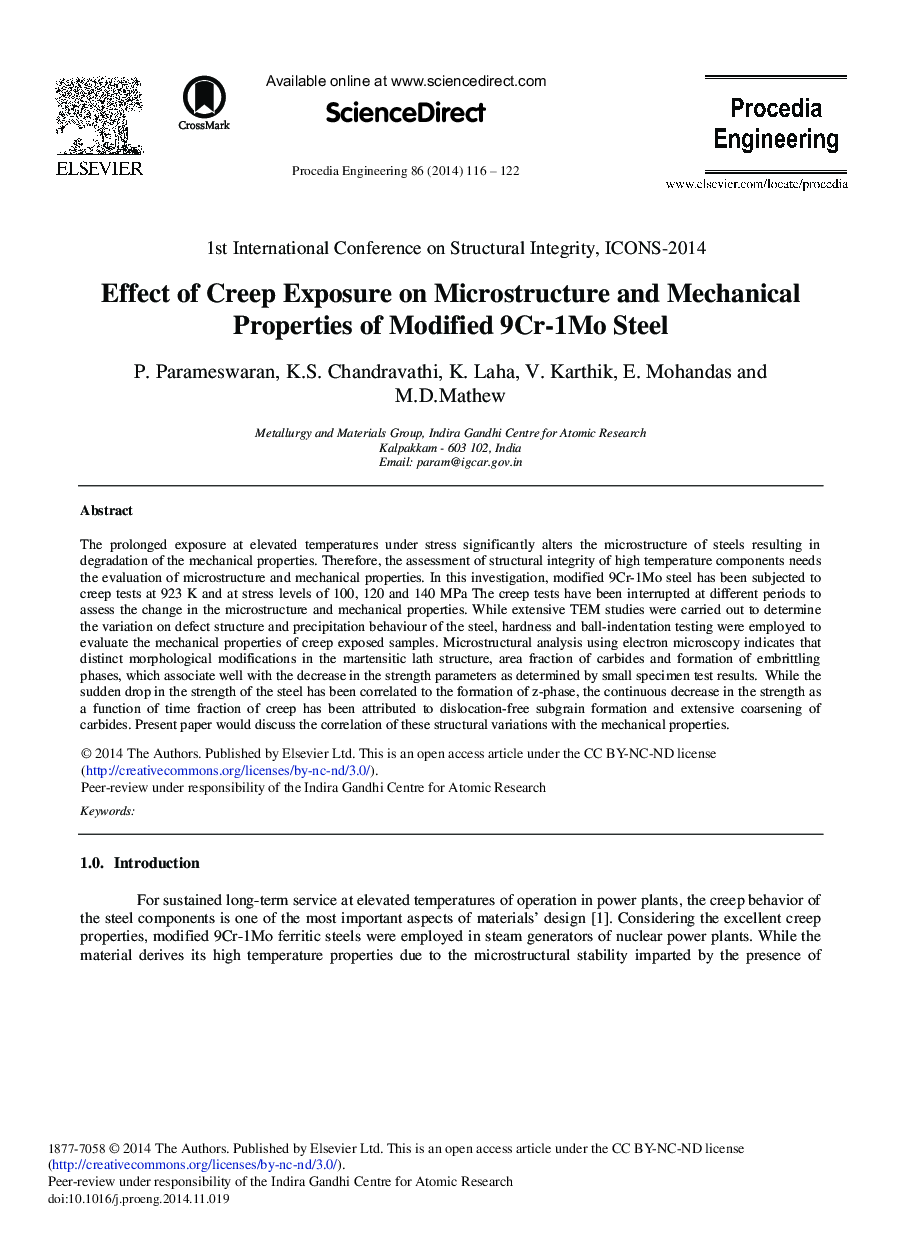| Article ID | Journal | Published Year | Pages | File Type |
|---|---|---|---|---|
| 857726 | Procedia Engineering | 2014 | 7 Pages |
The prolonged exposure at elevated temperatures under stress significantly alters the microstructure of steels resulting in degradation of the mechanical properties. Therefore, the assessment of structural integrity of high temperature components needs the evaluation of microstructure and mechanical properties. In this investigation, modified 9Cr-1Mo steel has been subjected to creep tests at 923 K and at stress levels of 100, 120 and 140 MPa The creep tests have been interrupted at different periods to assess the change in the microstructure and mechanical properties. While extensive TEM studies were carried out to determine the variation on defect structure and precipitation behaviour of the steel, hardness and ball-indentation testing were employed to evaluate the mechanical properties of creep exposed samples. Microstructural analysis using electron microscopy indicates that distinct morphological modifications in the martensitic lath structure, area fraction of carbides and formation of embrittling phases, which associate well with the decrease in the strength parameters as determined by small specimen test results. While the sudden drop in the strength of the steel has been correlated to the formation of z-phase, the continuous decrease in the strength as a function of time fraction of creep has been attributed to dislocation-free subgrain formation and extensive coarsening of carbides. Present paper would discuss the correlation of these structural variations with the mechanical properties.
